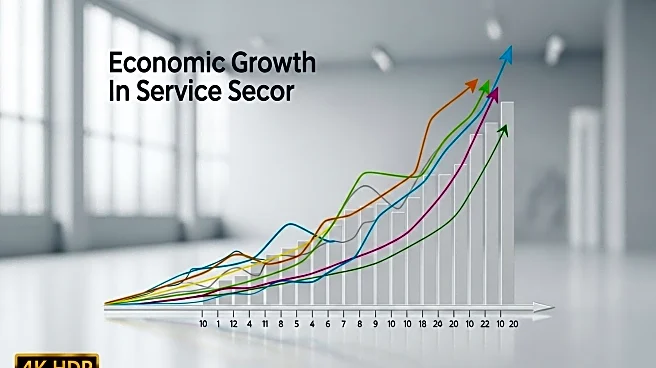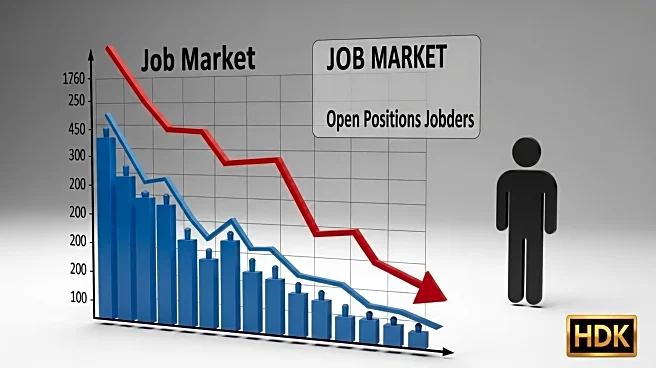What's Happening?
The U.S. services sector continued its growth trajectory in August, marking the third consecutive month of expansion, according to the Institute for Supply Management (ISM). The Services PMI rose to 52.0, up from July's 50.1, indicating a faster rate of growth. Twelve services sectors, including Information, Wholesale Trade, and Health Care, reported growth, while sectors like Accommodation & Food Services saw contraction. Key subindexes showed mixed results, with Business Activity/Production increasing to 55.0 and New Orders rising to 56.0. However, Employment remained weak at 46.5, and Supplier Deliveries slowed slightly.
Why It's Important?
The sustained growth in the services sector is a positive indicator for the U.S. economy, suggesting resilience amid ongoing challenges such as tariffs and supply chain disruptions. The expansion in sectors like Information and Wholesale Trade highlights the adaptability of these industries in navigating economic pressures. However, the contraction in Employment and Supplier Deliveries points to underlying issues that could affect long-term growth. The services sector's performance is crucial for overall economic stability, as it represents a significant portion of the U.S. GDP.
What's Next?
As the services sector continues to grow, businesses may need to address challenges related to tariffs and supply chain management to maintain momentum. The Federal Reserve's potential rate cuts could provide additional support, though their impact on long-term interest rates remains uncertain. Companies might focus on strategic planning to enhance operational efficiency and customer satisfaction, leveraging insights from the ISM report to inform decision-making.
Beyond the Headlines
The growth in the services sector amid tariff concerns highlights the complex interplay between international trade policies and domestic economic performance. Businesses may need to consider ethical and strategic implications of tariff-related cost adjustments, balancing profitability with consumer impact. Additionally, the sector's expansion could drive discussions on workforce development and the role of technology in enhancing service delivery.












